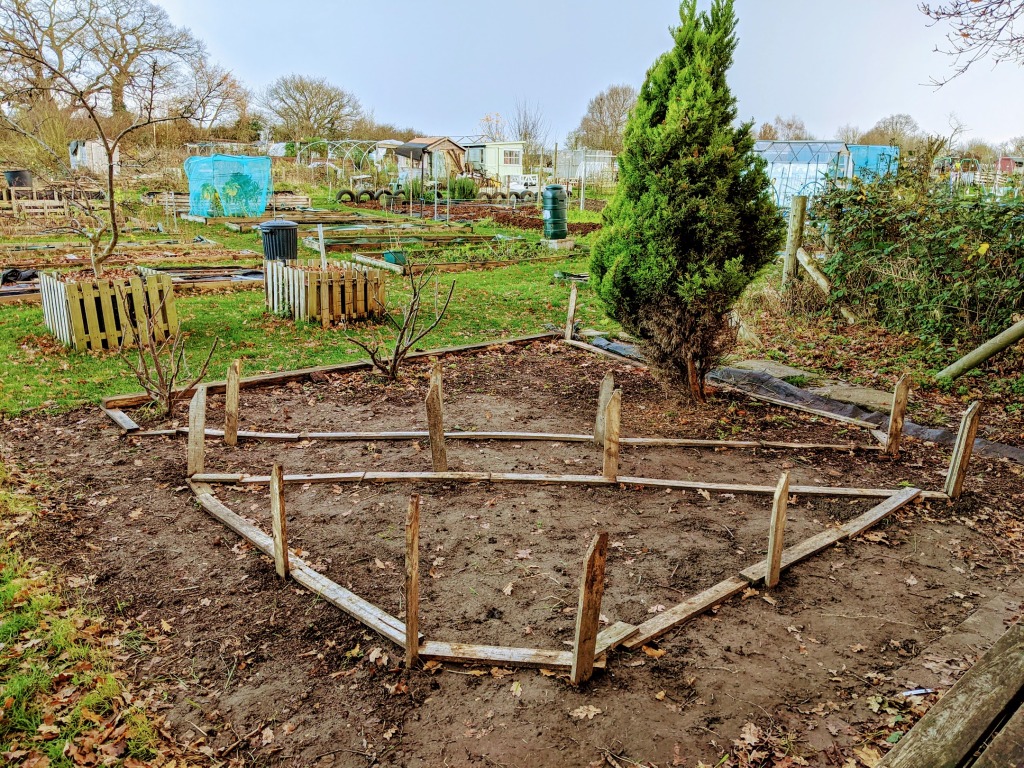The timing couldn’t be better as I’m starting a little new project on the plot. I’ve been wondering what to do, and how I can make the most of a space on that plot that doesn’t tend to get much attention.
After much deliberation and unnecessary agonising – I hereby declare that I’m going to be putting my efforts into making a wildlife orientated garden.
This year I found I had a problem with pockets of black fly, slugs and other pests – so I’d like to try and explore natural ways of creating a first line of defence against such things. I also want to find ways to make my own fertilisers out of what’s growing nearby. This has led me to establishing the following desired features.
A bug hotel
Bug hotels are a haven for insects and pollinators that are beneficial to your garden and are solitary in nature – solitary bees and wasps for example. Ladybirds also use these for a habitat and these are of course great for combatting black fly. Earwigs are also attracted to bug hotels, and these are great for fruit trees and keeping pests that are attracted to fruits down.
Lavender
Whenever I see lavender, I always see it teaming with bees – which is great. They’re also quite hardy and don’t need a lot of maintenance, which is another plus for an area that resides under some oak trees, and is left to elements. They’re also very vibrant and hopefully will give off a lovely scent in the spring, heading into the summer.
A bird table/feeder
Birds are quite important to an ecosystem, as they’re predators that keep pests under control. I do know that I have healthy number of pigeons to the plot, but these tend to focus on the berries I have growing. I think I’d like to focus on getting other types of birds to visit, and try and deter them away from my main crop.
Comfrey
Comfrey grows all around this space and they are, like the lavender low maintenance and do have a nice enticing flower to help attract pollinators. I’ve also singled out comfrey as you can make a feed with with the leaves – which is also very handy. I tend to not feed my plants, mainly due to time, but next year, armed with the comfrey, I think I might adopt a new habit.
A bird bath
Where you have birds visiting, it’s also a good idea to have a bird bath there as well. Like the table, it’s a great source of food, and also doubles up as a place to bathe in. Birds need to wash themselves to help keep their feathers in check. Water will dampen and loosen dirt which makes it easier for feather tending.
Wildflowers
I’ve got two worn out old wheelbarrows and I’m itching to make use of them, by growing something in them. Wildflowers seem like a good idea here. It would attract some more pollinators, and also look nice and rustic – a good example of up-cycling. We grew wildflowers before and were very happy with the results. The benefit of wildflowers can be untold if done right.
A hedgehog house
Hedgehogs are a good thing to have in the garden – they eat slugs! So I’m going to build a hedgehog house, in a bid to call in the cavalry, to help with that eternal battle between gardener and slug. In July of 2020, the British Hedgehog Preservation Society announced that the hedgehog was officially “vulnerable to extinction” – so I’m going to do my bit and try and help them out.
Nettles
I hear that nettles are great for attracting blackfly – so much so that blackfly will move off of your plants and into the the nettles. Similar to comfrey, nettles can be used to make a fertiliser. I’ll be watching closely as to which fertiliser works best if I get around to making some. I’ll also be growing these in the other old wheelbarrow – to help make sure they don’t spread.
Making it low maintenance
Of course wildlife spaces are low maintenance in nature, so I can’t see too much attention is going to be needed overall.


I’ve cleared the space, and I’ve laid out a path using some pallet wood I’ve collected over the last few years. I used the mower as a guide to help me make sure the space is wide enough and that I can turn easily, when maintaining a path.
The beds are quite wide and are a (admittedly) strange, but logical shape. Something I’m conscious of, is being able to reach in to tend and weed where I need to, so most of the immovable features, like the bug hotel, nettle and wildflower barrows will be in the middle, so that I just need to reach in about a foot or so.
Now that the space is cleared and the beds are laid out, I feel that I can move on with filling it 🙂
What do you think? Do you have a space dedicated to nature at the allotment? I’d love to know in the comments below.


Leave a Reply